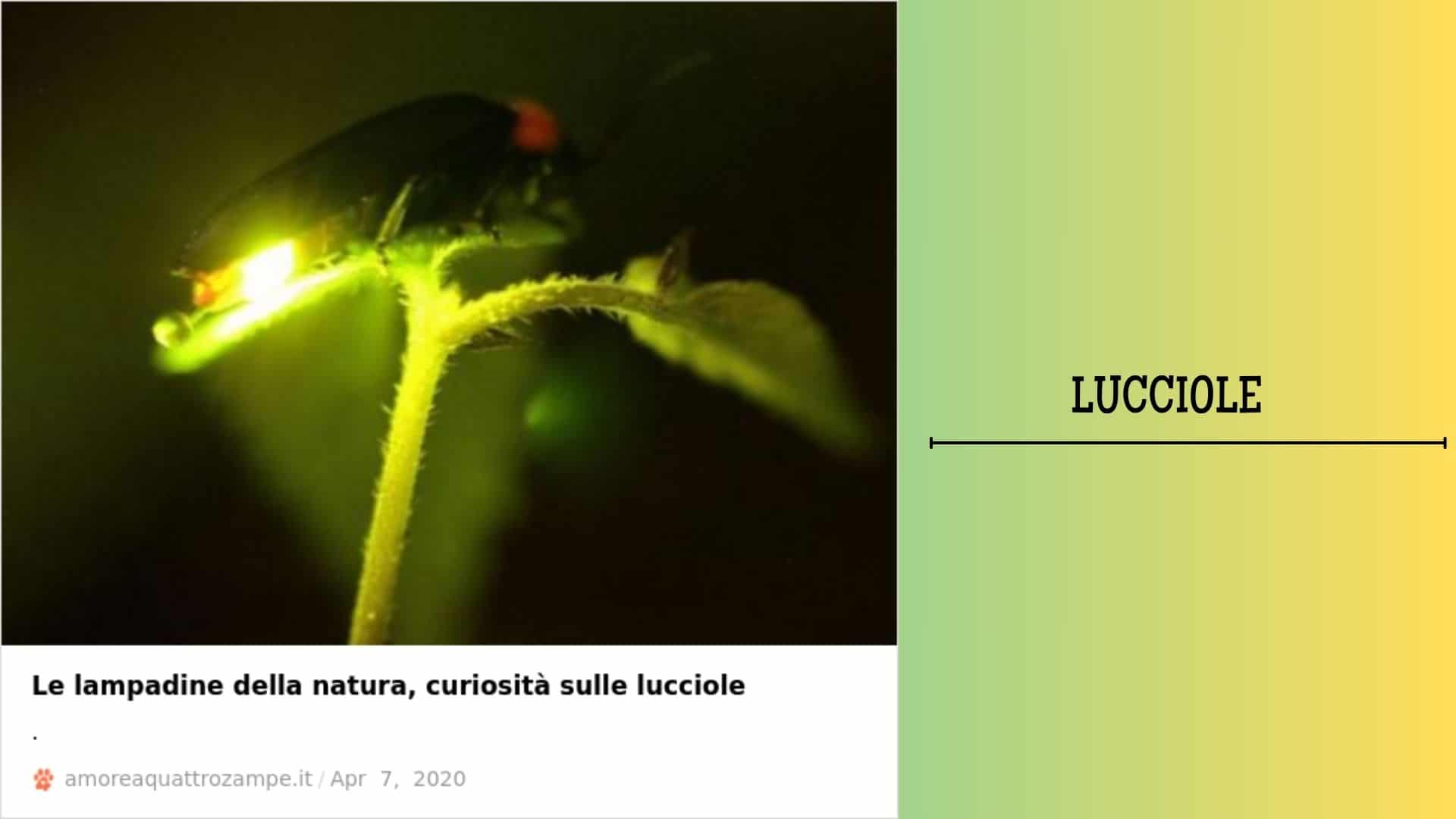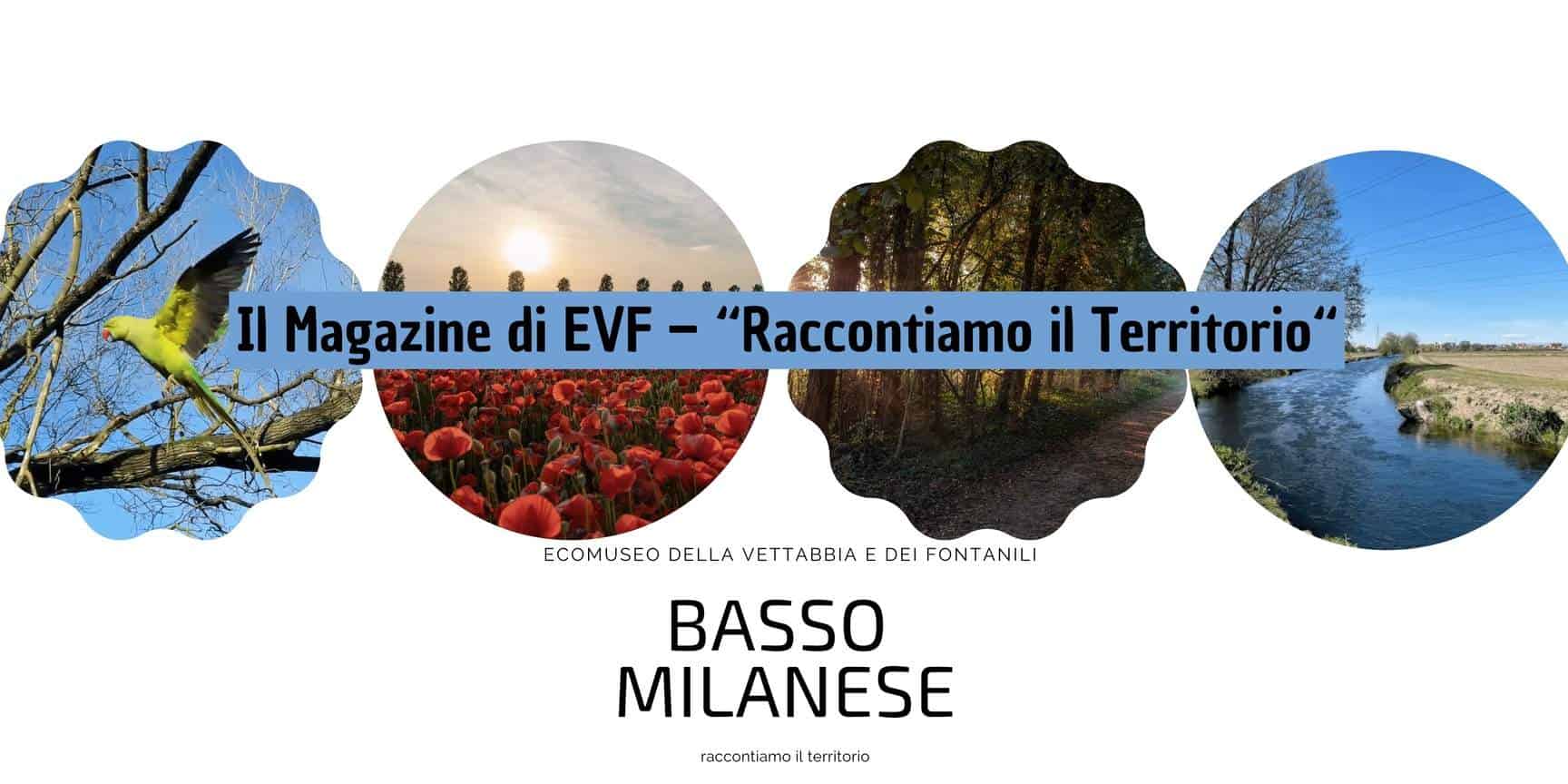Fireflies


Lucciole: bagliori magici nel buio della notte che dobbiamo proteggere
Small beetles belonging to the family Lampyridae, which includes around 2,000 species and 100 genera, fireflies are widespread in Europe, Asia, and the Tropics.
Italy, with its 21 species across 5 genera, is the European country where these insects are most common. In the Lower Milanese area, 4 of these species—*Luciola Italica*, *Luciola Lusitanica*, *Lamprohiza Splendidula*, and *Lampyris Noctiluca*—inhabit our irrigated countryside: the Muzzetta Nature Reserve in the Rodano area and the ethnographic centre of Cascina Castello, in nearby Settala, have been the subject of various school visits over the years.
Evoking a fairytale-like and magical world, fireflies, as if by enchantment, show us how many fascinating things surround us, and how careful and respectful observation can awaken in us a love for life and our beloved land.
In an article dated February 01, 1975, Pier Paolo Pasolini used the disappearance of fireflies as a metaphor to debate economic and social changes in Italian society.
https://www.corriere.it/speciali/pasolini/potere.html
The decrease in the firefly population is caused by several factors: the transformation of fields due to pesticide use, the expansion of concrete areas, air and water pollution and excessive artificial lighting.
Fireflies are real alchemists who can transform a common element like iron into “gold” light. They take in oxygen and combine it with a substance called “luciferin,” creating a chemical reaction that produces light without much heat. Their bioluminescence, which changes from green to yellow, is made through a layer of microscopic crystals that reflect light. Water is essential for this process.
The intermittent lighting at night is used as a warning to potential predators, but some animals like spiders, toads, and bats still prey on fireflies.
https://www.nationalgeographic.it/come-si-illuminano-le-lucciole
During mating season, male fireflies use flashes to identify and court females of the same species. The courtship ritual involves intricate flight patterns and spans from 20 minutes to an hour. If mating doesn’t occur, the female will attempt again the following night. After mating, the female lays the eggs and may die a few days later.
The life of adult fireflies is short; some females die after summer mating. The larval stage, however, lasts two to three years, during which the larvae are formidable predators with a particular appetite for snails and slugs. It may be surprising to learn that these beautiful light-emitting insects are carnivorous and don’t just feed on nectar and flower petals. There’s a curious legend that tells firefly larvae would be able to trick snails into coming out of their shells by mimicking, using their paws, the sound of rain, which usually drives snails into movement.
Equipped with head, chest, abdomen, antennae, compound eyes, mouthpiece and wings, only a few fireflies can take flight. Just as the male peacock displays vividly coloured plumage, in contrast to the modest appearance of the female, this disparity, known as sexual dimorphism, is also typical of fireflies. In fact, the differences are sometimes so pronounced that it’s hard to believe the creatures belong to the same species.

Le lucciole, 10 curiosità su questo splendente insetto che non conoscevi
The metamorphosis involves several stages: from the hatching of the eggs, through larval development until it transforms into pupae and finally emerges as an adult insect. This life cycle can last approximately two years. As night falls, it becomes the male’s responsibility to locate the flashing that will help him in preserving the species.
Thus, we can admire how bright stripes and love dialogues intertwine in the night in search of a soul mate.
Perché le lucciole fanno luce?
We would like fireflies to return as numerous as they used to be, making parks and fields shine on summer twilights. If so, it will mean that we have managed to preserve the quality of our environment.
Bibliography: ‘ “Lucciole.Vita spericolata di un coleotteri pieno di energia” by Domenico Barboni’
Giada De Marni
Traduzione in lingua inglese e podcast realizzati da Lisa Carlone – Progetto PCTO con Regina Mundi
Registrazione Podcast a cura di Luigi Maisto
Supervisione – Piera Scudeletti EVF
